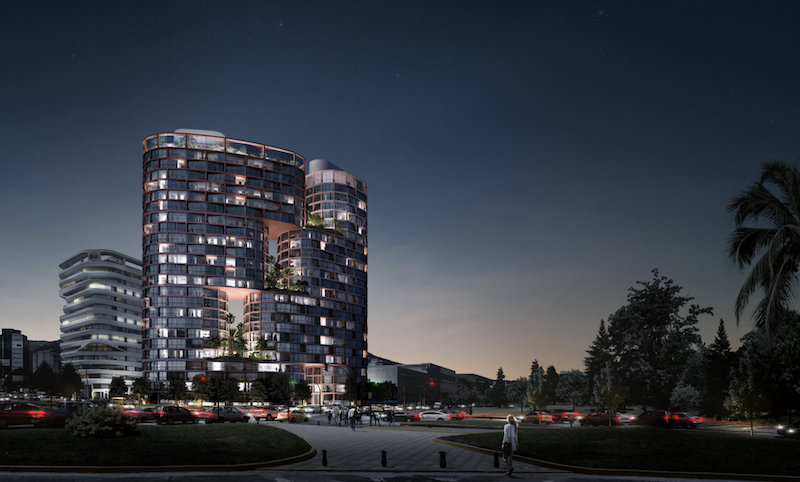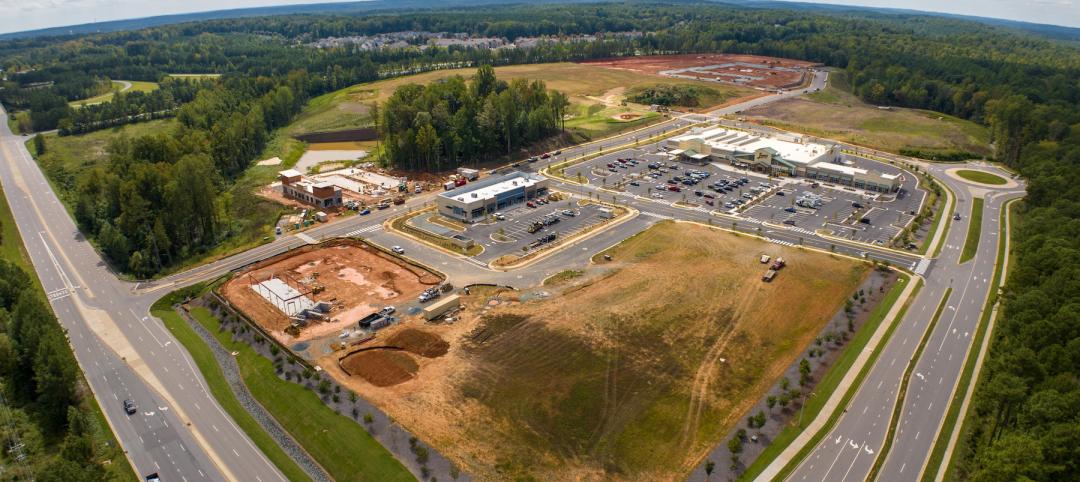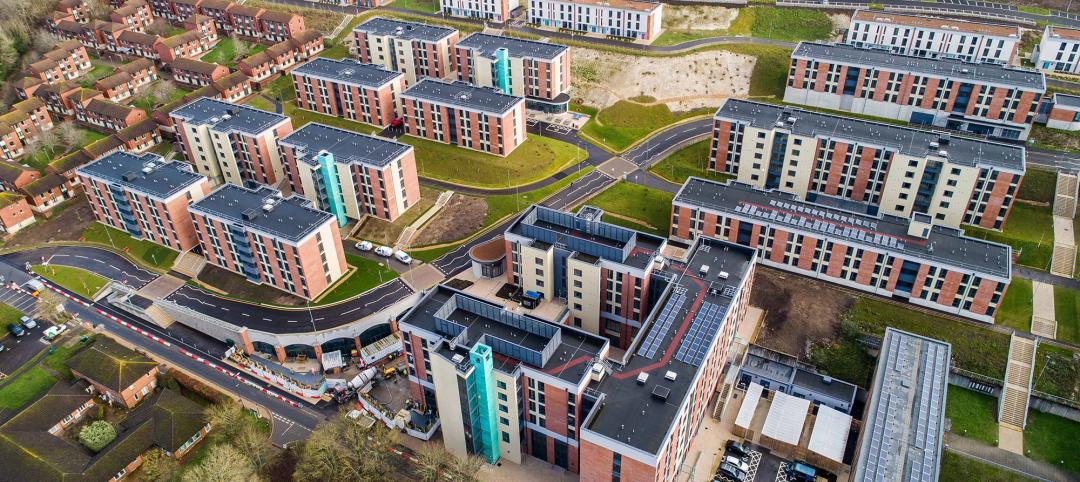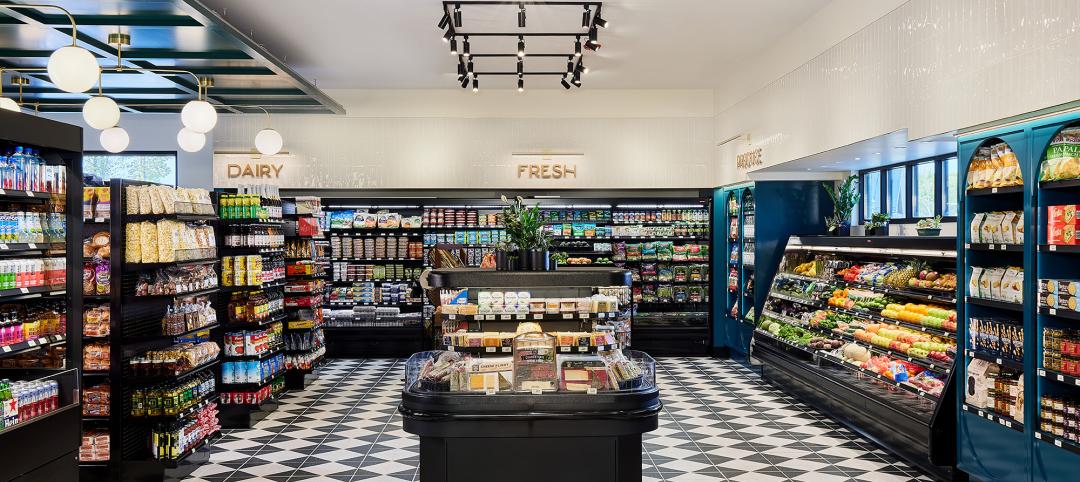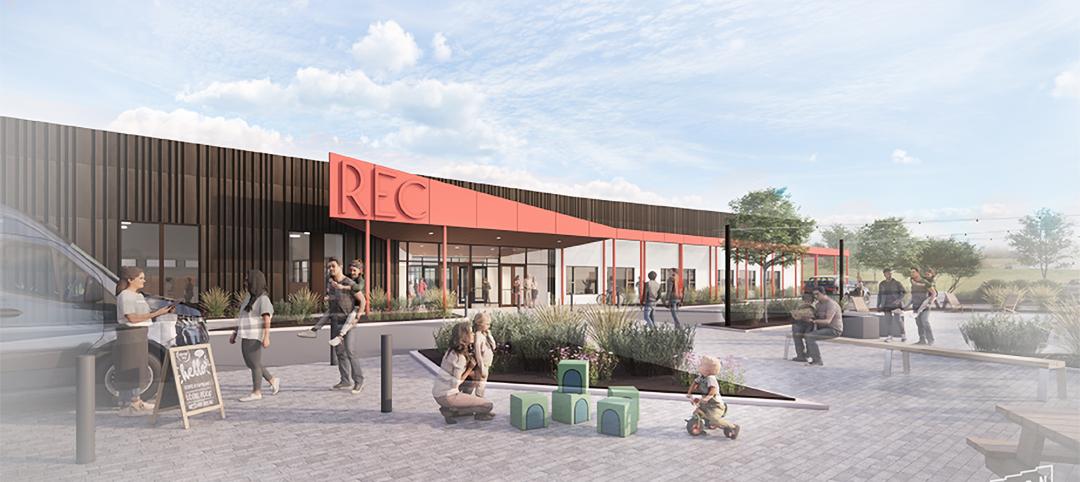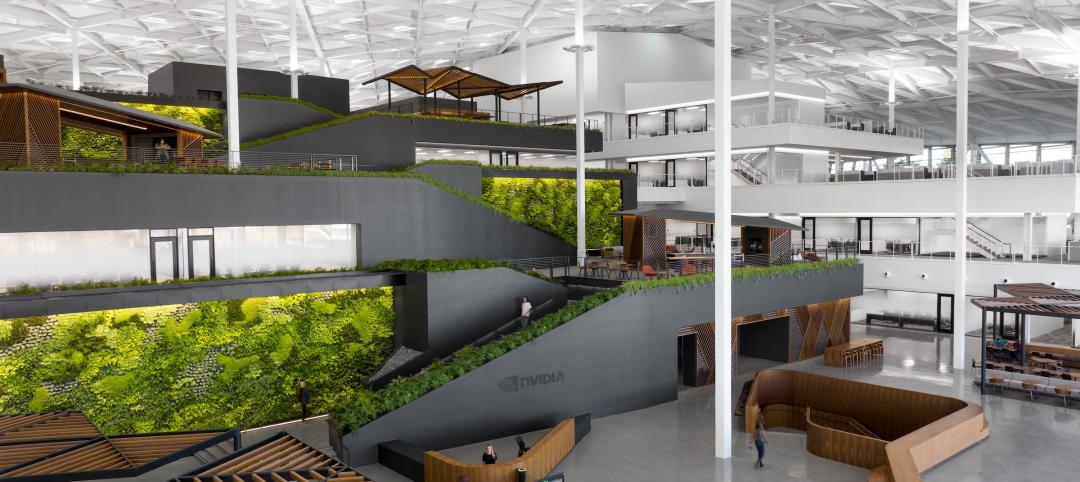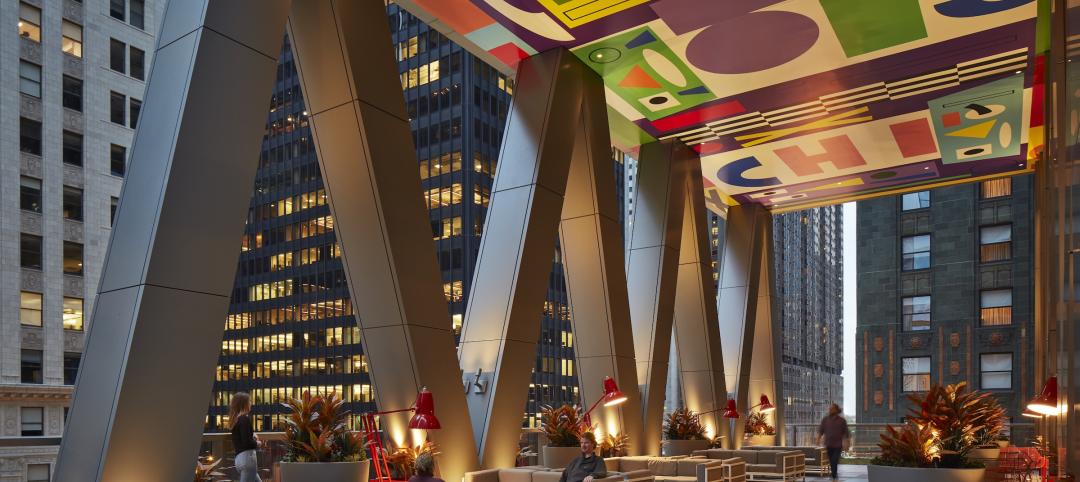A 24-story, 100-meter mixed-use tower is set to rise in Quito, Ecuador, the greenest capital in South America.
The BIG-designed building, dubbed EPIQ, is located on the southern tip of La Carolina Park in the center of the city on a quarter-of-a-circle site across from the new Quito subway. The building was designed with rounded corners to allow for panoramic views of the city while minimizing impact from neighboring buildings to daylight exposure. This rounded corner design creates a facade that is a continuously wrapping envelope, meaning the building has no back side.
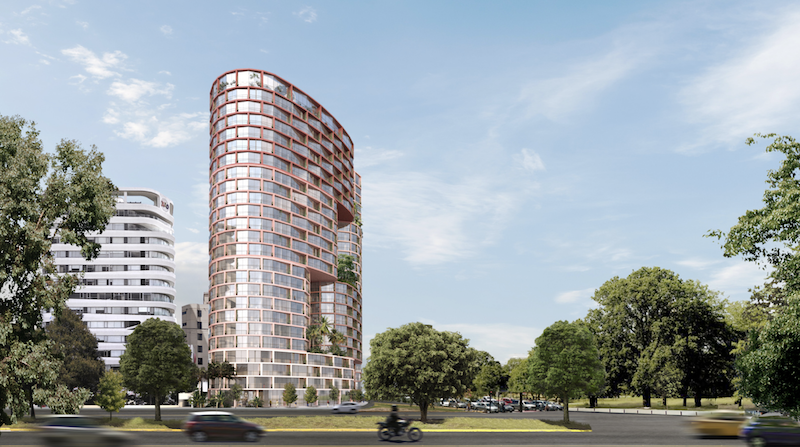
At EPIQ’s base a pedestrian through-block connection forms a new gateway to a nearby park and the recently completed subway. Also located at the base are offices, lobbies, retail, and a restaurant. The above floors house residential and amenity spaces.
See Also: New social campus for innovators, tech leaders covers a full city block
As the building rises, soft openings are carved into the building mass to create eight district blocks. These buildings within a building are all connected via large, communal green terraces at different elevations to create a vertical neighborhood. The terraces also allow daylight to permeate the entire building.
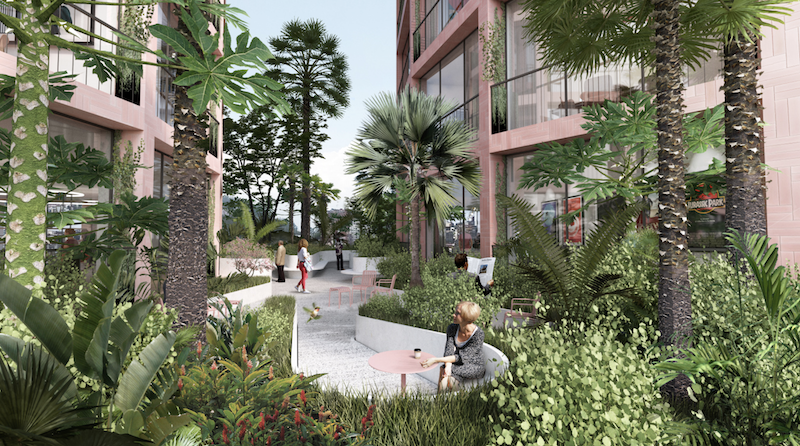
The building’s colors and patterns are reflective of the earth tones and herringbone pattern of the tiles seen throughout the streets of Quito’s Old City. The facade pattern is based on the scale of the individual apartments with red and pink hues that give each volume its own identity.
The project is currently in progress.
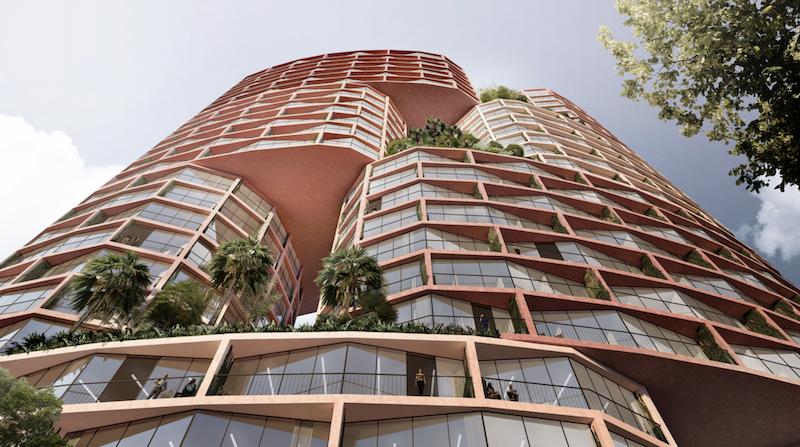
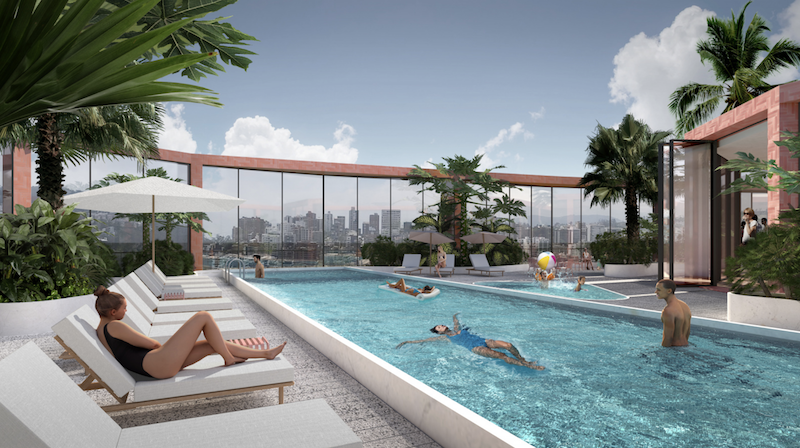
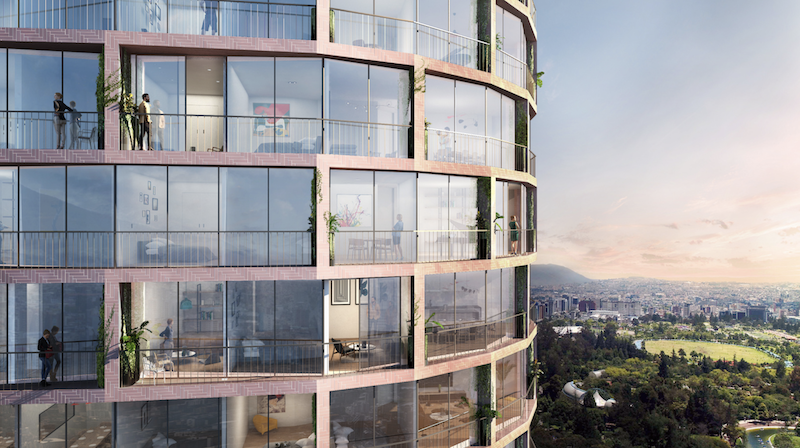
Related Stories
Mixed-Use | Oct 5, 2023
Mixed-use pieces supporting a master plan in North Carolina fall into place
Near Chatham Park, a new multifamily housing community follows the opening of a shopping center.
Contractors | Sep 25, 2023
Balfour Beatty expands its operations in Tampa Bay, Fla.
Balfour Beatty is expanding its leading construction operations into the Tampa Bay area offering specialized and expert services to deliver premier projects along Florida’s Gulf Coast.
Mixed-Use | Sep 20, 2023
Tampa Bay Rays, Hines finalize deal for a stadium-anchored multiuse district in St. Petersburg, Fla.
The Tampa Bay Rays Major League Baseball team announced that it has reached an agreement with St. Petersburg and Pinellas County on a $6.5 billion, 86-acre mixed-use development that will include a new 30,000-seat ballpark and an array of office, housing, hotel, retail, and restaurant space totaling 8 million sf.
Adaptive Reuse | Sep 19, 2023
Transforming shopping malls into 21st century neighborhoods
As we reimagine the antiquated shopping mall, Marc Asnis, AICP, Associate, Perkins&Will, details four first steps to consider.
Resort Design | Sep 18, 2023
Luxury resort provides new housing community for its employees
The Wisteria community will feature a slew of exclusive amenities, including a market, pub, and fitness center, in addition to 33 new patio homes.
Adaptive Reuse | Aug 31, 2023
Small town takes over big box
GBBN associate Claire Shafer, AIA, breaks down the firm's recreational adaptive reuse project for a small Indiana town.
Giants 400 | Aug 22, 2023
Top 115 Architecture Engineering Firms for 2023
Stantec, HDR, Page, HOK, and Arcadis North America top the rankings of the nation's largest architecture engineering (AE) firms for nonresidential building and multifamily housing work, as reported in Building Design+Construction's 2023 Giants 400 Report.
Giants 400 | Aug 22, 2023
2023 Giants 400 Report: Ranking the nation's largest architecture, engineering, and construction firms
A record 552 AEC firms submitted data for BD+C's 2023 Giants 400 Report. The final report includes 137 rankings across 25 building sectors and specialty categories.
Giants 400 | Aug 22, 2023
Top 175 Architecture Firms for 2023
Gensler, HKS, Perkins&Will, Corgan, and Perkins Eastman top the rankings of the nation's largest architecture firms for nonresidential building and multifamily housing work, as reported in Building Design+Construction's 2023 Giants 400 Report.
Adaptive Reuse | Aug 17, 2023
How to design for adaptive reuse: Don’t reinvent the wheel
Gresham Smith demonstrates the opportunities of adaptive reuse, specifically reusing empty big-box retail and malls, many of which sit unused or underutilized across the country.


